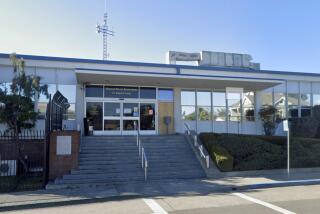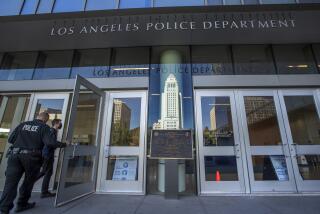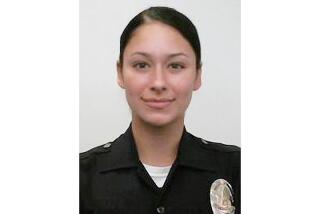L.A. police panel revises officer shooting reviews
- Share via
The Los Angeles Police Commission on Tuesday revised the way it evaluates police shootings, tying an officer’s use of deadly force to his or her actions in the moments leading up to the incident.
The unanimous decision by the civilian panel that oversees the Los Angeles Police Department was made to bring the department in line with current legal standards.
It also is expected to clarify commission rules that in the past have led to confusion over how the panel evaluates some officer shootings and other incidents involving deadly force.
L.A. Now Live: Discuss how LAPD officer-involved shootings are judged at 12:30 p.m.
With its vote, the commission made clear it can find that a shooting or other serious incident violated department policy if the officer’s actions beforehand created a situation in which deadly force was necessary. Until now, the commission has generally focused on the narrow question of whether an officer faced a deadly threat at the moment he opened fire.
For decades, the commission has followed a multi-step process in officer shootings and other deadly force cases. Instead of making a single decision on whether the officer was right to fire, it divides incidents into separate parts.
It first decides if the officer’s actions leading up to the shooting were acceptable. Then it judges the officer’s decision to draw his weapon, and finally the shooting itself.
Most of the time, the process does not cause confusion. In the majority of cases, officers are cleared of any wrongdoing. And when the commission does find that an officer made mistakes early on in an encounter, it is usually clear that those missteps did not lead to the officer’s decision to use deadly force.
But in a few cases each year the line separating an officer’s decision to fire at a suspect from his actions beforehand is difficult or impossible to find.
Alex Bustamante, the commission’s inspector general who recommended amending the policy, and Commissioner Robert Saltzman emphasized in comments Tuesday that the move does not mark a change in the commission’s policy. In some past cases, they said, the oversight panel has considered an officer’s actions prior to a shooting when judging the shooting itself.
Bustamante said he could not provide any examples of such cases, citing confidentiality rules.
Other times, however, the commission has not linked an officer’s errors before a shooting to the shooting itself.
For example, Kamisha Davidson was shot by a LAPD officer early one morning in November 2011.
The officer and his partner were dispatched to the Baldwin Hills apartment Davidson shared with several relatives.
Family members met the officers outside and explained that the 30-year-old woman suffered from bipolar disorder and schizophrenia. Davidson had refused to take her medication and was acting violently and had threatened to kill family members, the relatives said, according to department records.
The officers went inside and found Davidson in her bedroom. When she grew agitated and attempted to force her way past the officers, they grabbed her and a fight ensued in the hallway, records show.
Saying afterward that he feared for his and his partner’s safety, one of the officers shot Davidson in the stomach at close range after she allegedly grabbed a long piece of plastic tubing with screws protruding from it.
The commission faulted the officers for several errors in judgment. The panel was critical of the officers’ decision to enter the apartment without waiting for mental-health experts to arrive. And the officers made a further mess of the situation by confronting Davidson without first drawing up a plan for how to deal with her, and for failing to handcuff her, the commission found.
Nonetheless, the commission determined that the officer who shot Davidson was justified in using deadly force.
In reaching their decision, commissioners kept the errors before the shooting separate from the shooting itself. Had the officers handled the minutes before the shooting more capably, they probably would have avoided the fight in the hallway and the need to shoot Davidson. But once Davidson grabbed the plastic tube, the board concluded, she posed a threat that the officer was forced to stop.
Twitter: @joelrubin
More to Read
Sign up for Essential California
The most important California stories and recommendations in your inbox every morning.
You may occasionally receive promotional content from the Los Angeles Times.











